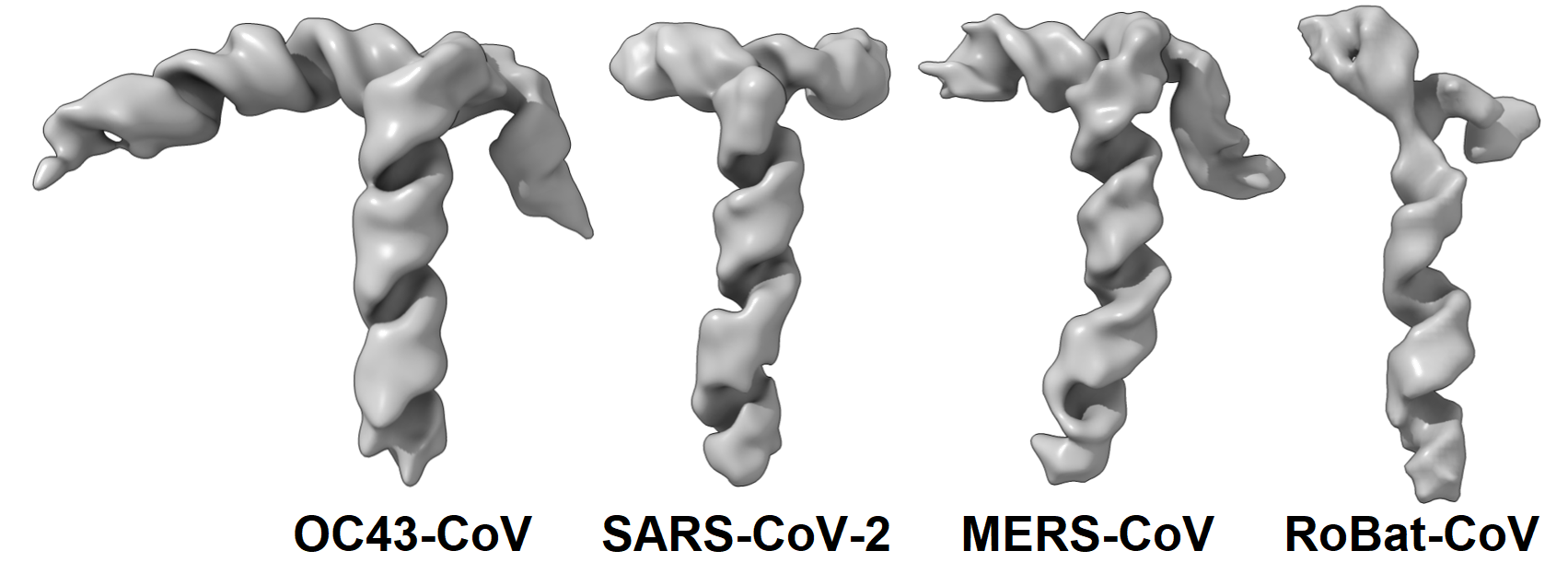Prof. Janusz Bujnicki's team from IIMCB published an article on the main types of betacoronaviruses, including SARS-CoV-2 and MERS

In a new study published in the journal Nucleic Acids Research, a team from the International Institute of Molecular and Cell Biology in Warsaw (IIMCB), led by Prof. Janusz Bujnicki, in collaboration with the Spanish National Research Council (CSIC) in Madrid and the Jagiellonian University in Krakow, made a significant discovery regarding the four main types of betacoronaviruses, including the deadly viruses SARS-CoV-2 and MERS, as well as the OC43 virus that causes colds.
The scientists analyzed the ribonucleic acid (RNA) molecules – the genetic material of betacoronaviruses. The RNA nucleotide sequences of coronaviruses, which are about 30,000 nucleotides long, differ significantly from each other. In this work, detailed analyses focused on examining the spatial structure and dynamics of about 500 nucleotides at the very beginning of the viral RNA (the "5′ end"), which plays a crucial role in the replication of viruses in infected cells.
The 5′ ends of the genomic RNA of four different coronaviruses were examined using advanced biochemical, biophysical, and bioinformatics techniques, including chemical probing, cryo-electron microscopy, atomic force microscopy, and computer modeling. The results revealed the presence of very similar structural elements, despite being formed by different nucleotide sequences in the RNA of various betacoronaviruses.
"This discovery is fundamental for understanding the similarities in the functioning of betacoronaviruses," says Prof. Janusz Bujnicki from the IIMCB, the project leader. "The spatial structures we have identified in the RNA molecules of viruses may contribute to the development of new antiviral drugs in the future."
The significance of the published discovery goes beyond understanding the SARS-CoV-2 virus responsible for the COVID-19 pandemic and sheds new light on the molecular mechanisms of how all coronaviruses function.
This research was possible thanks to the international collaboration of scientists from Warsaw, Krakow, and Madrid. The project was initiated as part of the COVID-19 research program, funded by the National Science Centre (grant 2020/01/0/NZ1/00232), and then continued with support from other national and international sources. Key to success was the effective cooperation of experts from various fields of science.
The paper "Conserved structures and dynamics in 5′-proximal regions of Betacoronavirus RNA genomes" is available at: https://doi.org/10.1093/nar/gkae144
 Fig. Evolutionarily conserved structures of SL5 regulatory elements in Betacoronavirus RNA genomes
Fig. Evolutionarily conserved structures of SL5 regulatory elements in Betacoronavirus RNA genomes
